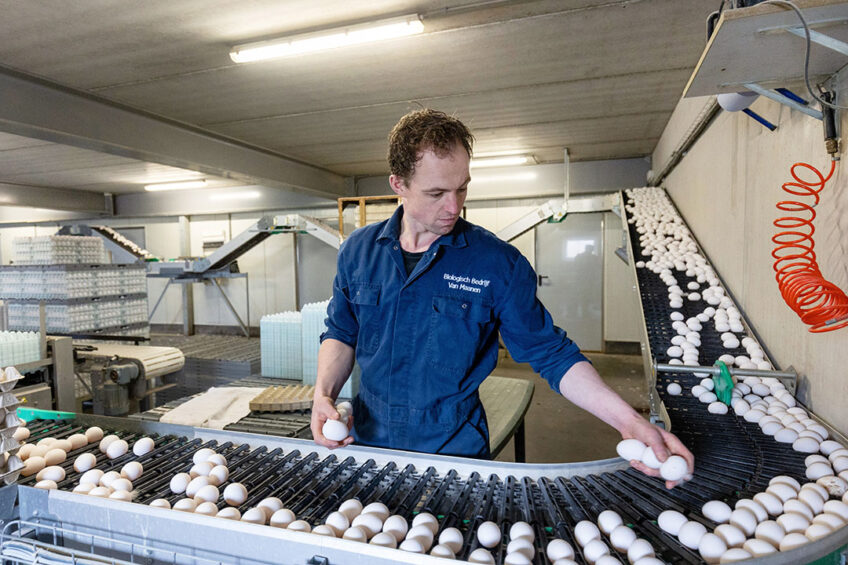Top tips to ensure egg shell quality

With consumers wanting a uniform, aesthetically pleasing egg, egg shell defects are often thought of as a financial loss, but the shell should be seen as a window on the health, management and productivity of flocks.
A sudden or early increase in the number of seconds should always be looked at as a significant issue. The type of second can also help the farmer to identify and address issues before they have further implications for production and hen welfare.
Kathryn Stewart, poultry specialist vet at St David’s Poultry, says that as a vet, the eggs are an important diagnostic aid before hens are even examined: “For example, we get clients calling to say they are having more pale eggs. The colour is mostly genetically determined but an increase in ‘pale’ eggs in brown hens can be attributed to infectious bronchitis, poor gut health, medication, nutrition, age, parasites or stress. Shell pimples and ‘sandpaper’ shells may also be caused by infectious bronchitis due to damage to the oviduct.”
Certain viral and bacterial diseases can cause typical seconds. Certain infectious bronchitis strains commonly cause crinkled shells and other pale eggs. Newcastle disease can result in pointy or misshapen eggs, and Mycoplasma synoviae typically causes translucency. Egg drop syndrome can also lead to pale, misshapen and weak eggs but comes alongside a significant production drop. Stewart says there are a number of ways to ensure a healthy shell with a positive energy balance:
- Nutrition: The shell largely consists of calcium carbonate and takes 20 of the 25 hours necessary to produce one egg. Up to half of the dietary calcium is needed for shell production, with additional supply coming from bone storage when required, although this should be prevented wherever possible. Birds that are in a negative energy balance due to poor feathering, red mite infestation, poor intestinal health or over-sized eggs, or where the diet is deficient in calcium, vitamin D3 and phosphorus, will need more support to prevent thinner shells.
- Heat stress: This can affect calcium absorption due to metabolic pathways in the bird, especially when panting. In the UK, which had a particularly hot summer last year, St David’s had many reports of weak shell or even shell-less eggs. In these instances, supplementation is important and research has shown that providing this – either through feed or water – will improve production, FCR, hormone and immune function, as well as egg mass and shell quality.
- Quantity of feed: A good proportion of the shell is formed during the night, so it is important that the bird has eaten enough to ensure food is available in the intestines before the lights are turned off. Physical disturbances, such as heavy red mite infestation or mucking out, can significantly interrupt rest periods and lead to shell deformity.
- Packing issues: Hairline cracks and shell damage can also be exacerbated by packing machinery and efforts should be made to make transitions as smooth as possible and keep belts moving consistently rather than stopping and starting. Mechanical eggs can be a useful tool to check for risk areas.












